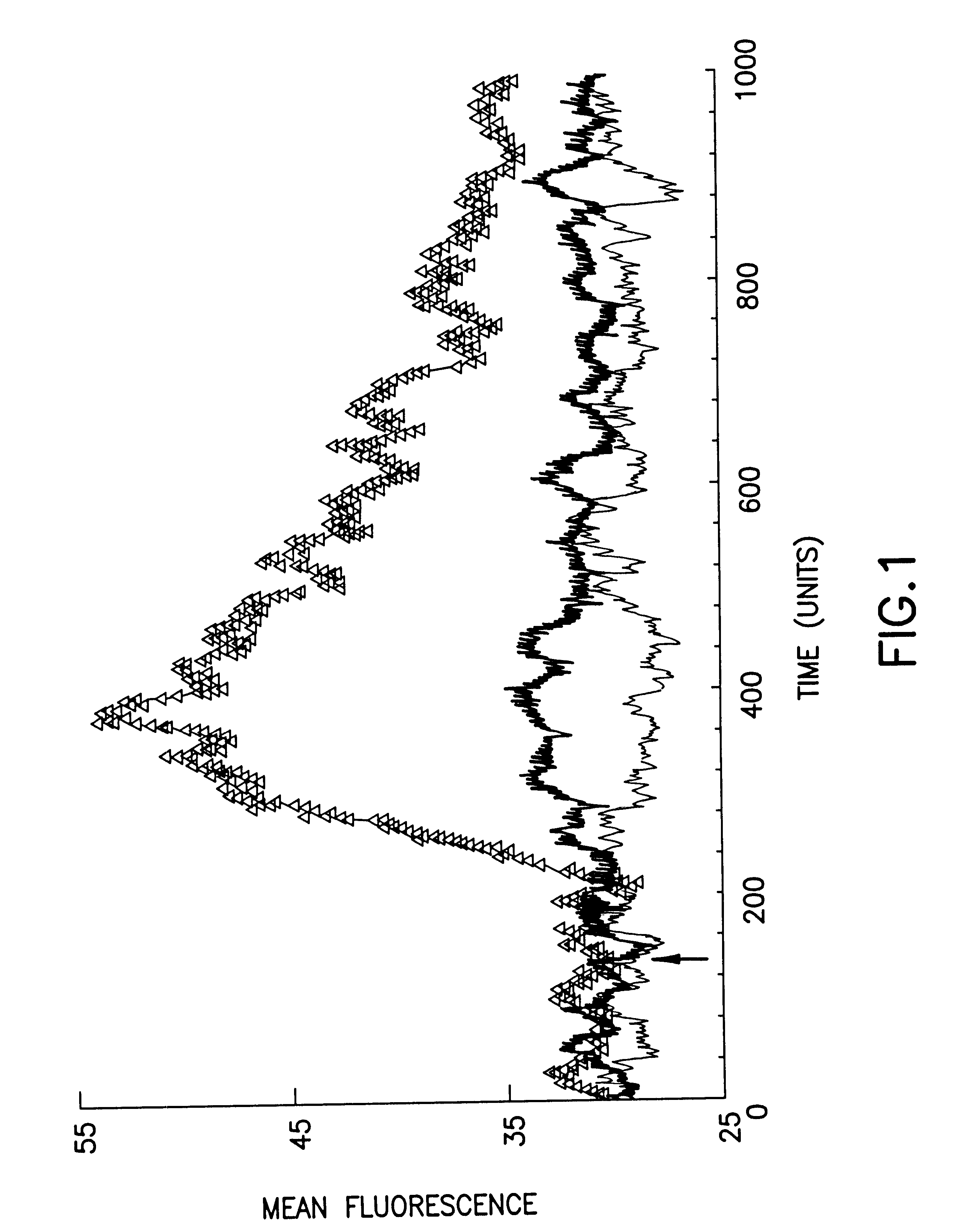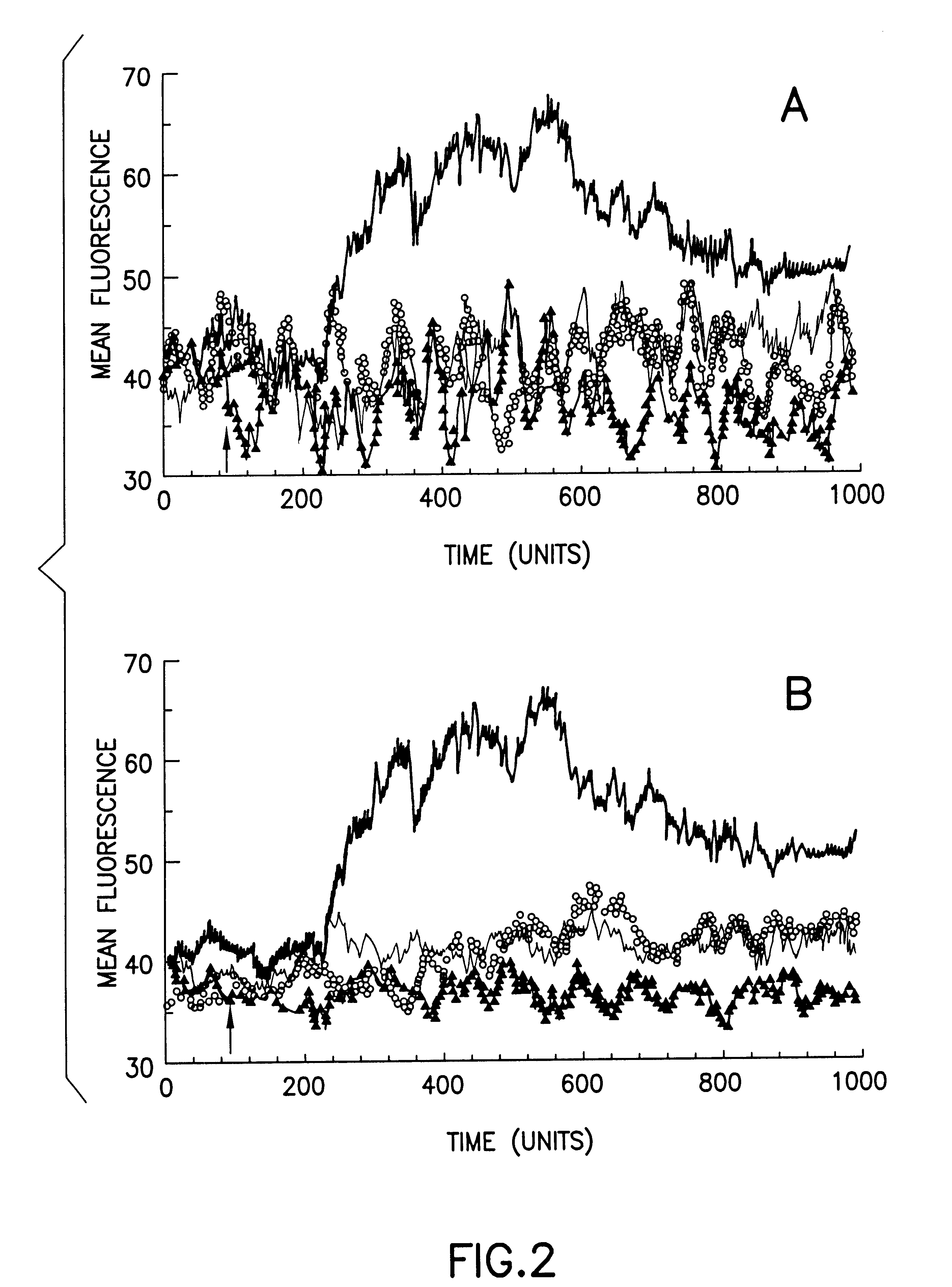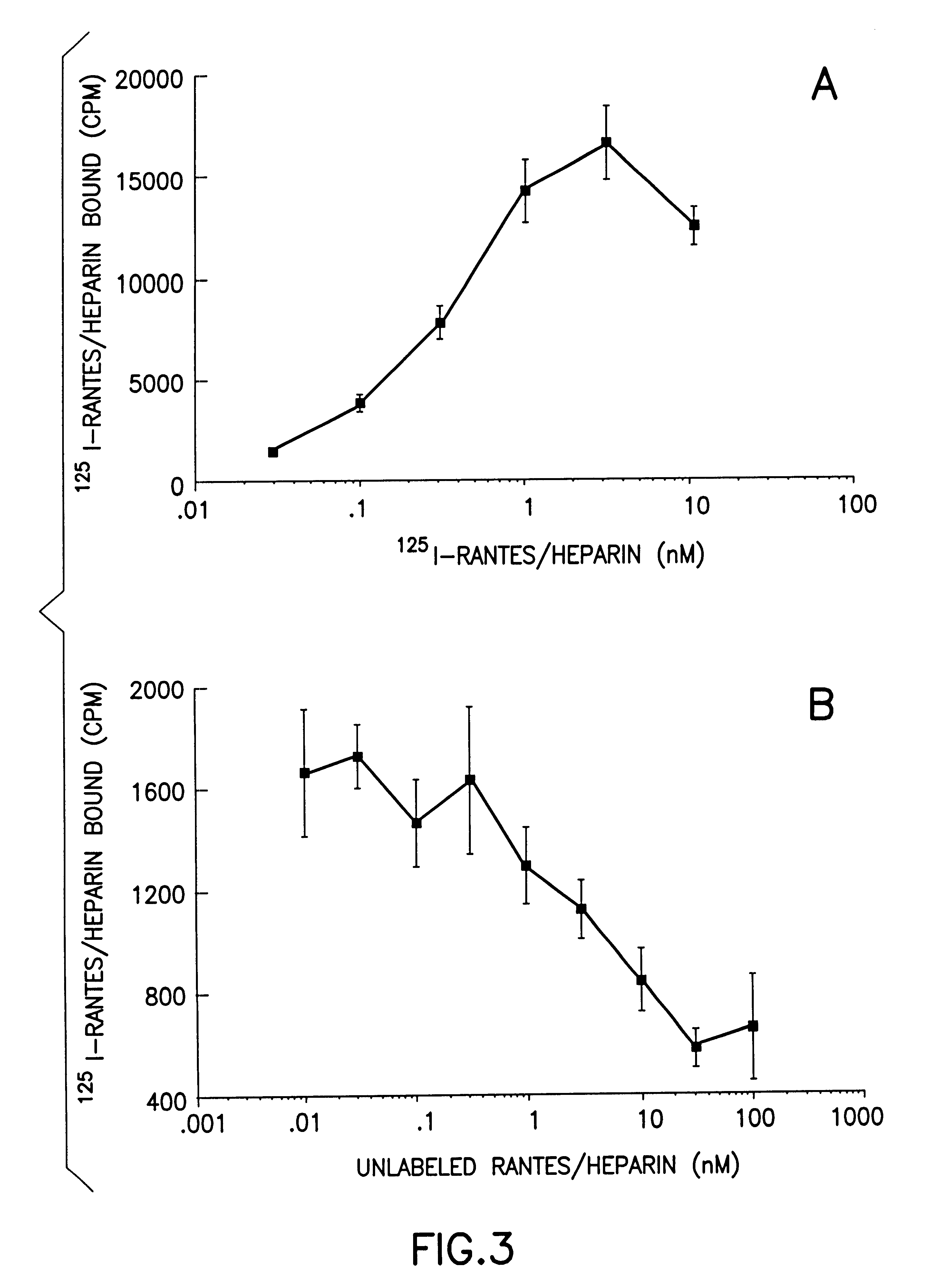Chemokine-glycosaminoglycan complexes and their use in treating or preventing receptor mediated diseases
a technology of chemokine glycosaminoglycan and receptor mediated diseases, which is applied in the field of cell surface, can solve the problems of pathophysiological consequences, potentially life-threatening consequences, and limit the degree of leukocyte infiltration
- Summary
- Abstract
- Description
- Claims
- Application Information
AI Technical Summary
Benefits of technology
Problems solved by technology
Method used
Image
Examples
Embodiment Construction
4.1 General
The instant invention is based, at least in part, on the surprising finding that chemokine-glycosaminoglycan complexes retain the ability of the chemokine to suppress HIV-1 infection, but do not trigger normal receptor signaling. Based on the similar extracellular recognition of a receptor by infectious agents other than HIV and the involvement of receptor-ligand mediated signaling pathways in many diseases and conditions, the invention features a variety of novel receptor ligand containing antagonists and their use in preventing and treating certain diseases.
4.2 Definitions
For convenience, the meaning of certain terms and phrases employed in the specification, examples, and appended claims are provided below.
The term "agonist," as used herein, is meant to refer to an agent that mimics or upregulates (e.g. potentiates or supplements) a receptor activity. A receptor agonist can be a wild-type protein or derivative thereof having at least one bioactivity of the wild-type re...
PUM
| Property | Measurement | Unit |
|---|---|---|
| concentration | aaaaa | aaaaa |
| concentration | aaaaa | aaaaa |
| pH | aaaaa | aaaaa |
Abstract
Description
Claims
Application Information
 Login to View More
Login to View More - R&D
- Intellectual Property
- Life Sciences
- Materials
- Tech Scout
- Unparalleled Data Quality
- Higher Quality Content
- 60% Fewer Hallucinations
Browse by: Latest US Patents, China's latest patents, Technical Efficacy Thesaurus, Application Domain, Technology Topic, Popular Technical Reports.
© 2025 PatSnap. All rights reserved.Legal|Privacy policy|Modern Slavery Act Transparency Statement|Sitemap|About US| Contact US: help@patsnap.com



